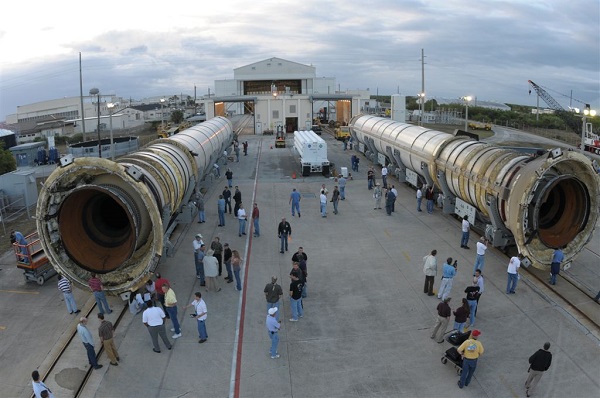
One of the best things about teaching in Japan was that most of my students were quite young. Most of them hadn’t developed the reserve that Japanese people are known for, and once they got to know you they were often curious about the strange foreigner who looked and acted so differently. It was also amazing what you could learn from them, if you were paying attention: Honoka had beautiful manners, Rikuto taught me some useful phrases, and Koki-kun showed how to stand up for what was right. Nanami, on the other hand, taught me how to trouble-shoot procedures in business.
One morning, Nanami brought a book up to where I was sitting. Instead of reading, however, she stared at me for a moment and then exclaimed: “John-sensei! You have blue eyes!”. I was forced to admit that it was indeed so. “Why blue eyes?” This required more explanation: I simplified Mendelian inheritance down to “Everyone in my family has blue eyes.”
At this Nanami became deeply sceptical, and decided to probe the matter further.
“John’s father blue eyes?” Yes.
“John’s mother blue eyes?” Yes, Nanami, that’s right.
“John’s brother blue eyes?” More of a grey-green most of the time, but yes.
“John’s sister blue eyes?” Yes.
Nanami thought about this for a moment, her face screwed up in four-year-old concentration, before returning to what she saw as the main point: “But John-sensei… why blue eyes?”

I’m sure you can imagine what pictures of me looked like.
In the end I wasn’t able to present Nanami with an answer that she considered satisfactory, and I still feel bad about failing in my role as a teacher at that point. It wasn’t until after I left Japan, however, that I realised what she had been teaching me. See, my current job requires me to spend a lot of time dealing with business concepts. I was researching ways to improve efficiency in business and came across the concept of Kaizen. At this point I remembered the conversation I had had with a Japanese pre-schooler, and a light went on in my head.
Kaizen, at least at least outside Japan, is seen as following the methods developed by the Toyota Motor Corporation. One important part of it is known as the ‘five whys’, and it is this which Nanami had introduced me to.
The ‘five whys’ is actually surprisingly simple to use. Each time you encounter a problem, ask why the problem occurred. Then ask why that problem occurred, and so on and so on. You can keep this up as long as you like, but five times is probably enough to get to the cause. The key to all this is that you’re looking for a process or behaviour that has broken down or doesn’t exist: this isn’t a blamestorming exercise, so it’s not enough to find a person or thing that broke and then shrug your shoulders and leave it at that. Let’s try an example.
High speed rail would be a great way of moving people and goods, but it’s not practical in the United States. High speed rails have to be wide apart, and standard US railways are only 1.435 metres wide. (the problem)
- Why? – Because the people who set the standard came from Europe, and that’s how wide the railways are in Europe.
- Why? – Because the people who built railway wagons in Europe used the same tools as for road wagons, and that’s the spacing they used.
- Why? – If they tried to use any other spacing, their wheels wouldn’t fit into the old rutted roads.
- Why? – The roads were originally built by the Romans to move their legions along, so they had to be that width.
- Why? – Their chariots were all built to a standard size and pulled by two horses, so the road had to be wide enough for two horses side by side. (root cause identified)
Bonus: The space shuttle had two big, solid-rocket boosters attached to the side of its external fuel tank. These boosters had to be transported by train, and the tunnels were only wide enough for standard railway wagons. In other words, an important design feature of one of the world’s most advanced transport systems was decided on by the Romans, all because of how big a horse’s behind is.

Not the only time some horse’s ass created a standard that caused problems later.
I’m not suggesting that Nanami was deliberately trying to teach me about this, although I wouldn’t be surprised if she ended up with a bright future at Toyota. But it does go to show that you can get insight from all sorts of unlikely places, if you’re paying attention.
Question of the post: Have you ever had an insight caused by an unlikely source? What happened?
While the “Five Why’s” are very useful, and in the Shuttle context I’ve read several articles by a former NASA Flight Director on how he used them. But, the bit about the SRB’s and horse’s butts is… not entirely true, despite being widely circulated.
http://www.snopes.com/history/american/gauge.asp
The key reason why the US doesn’t have high speed rail is that by the time high speed became practical, it wasn’t practical to rip up hundreds of thousands of miles of track. Because of the vast distances involved, it’s not economical to build new rail either.
LikeLike
Thanks for the reality check! I was too focused on the business aspect of the story to research its provenance, that’s a lesson for me.
High speed rail in the US is a difficult topic in some ways. It wouldn’t be practical to replace every kilometre of track in the continental USA immediately, but at the same time there seem to be some places it could be done. I see HSR as an alternative to short distance commuter airlines, and the cities on the Eastern seaboard might be well placed to take advantage of it.
LikeLike
Oh, a difficult topic indeed. There certainly are many places where they could be useful, but most of those places are also where it would be the least economical (due to the high cost-per-mile of building through built up areas) and problematic to get off the ground (NIMBY). There’s no clear or easy solution, so the can keeps getting kicked down the road while to problems get worse.
LikeLike
There are economic pressures against it, although I note in passing that Japan managed to install Shinkansen rails into quite heavily populated areas. Then again, Japan has quite a different culture to the US, so we can’t really expect the same situation to arise I suppose. One of the things which makes the Shinkansen successful is that it uses a different set of tracks to ‘normal’ railways, which means it isn’t subject to the same interruptions (level crossings, etc.).
And yes, NIMBYs are a constant problem more or less everywhere. Here in NZ, for example, a general consensus has arisen that renewable electricity sources are desirable… as long as no-one has to see them, hear them, or indeed notice their existence in any way. I can only imagine how frustrating that must be for the poor sods trying to build the things.
LikeLike
There is another issue in the US about high speed rail. The US freight trains use double wheel trucks (bogies) and carry very heavy loads (think coal and steel). Our train tracks are used for both freight and passengers. The railroads in the US derive their revenue from the freight which doesn’t have to move very fast so the quality of the rails doesn’t matter very much to them and they own the rail right of ways. There is a high speed train that runs from Washington DC to New York. It was a very bumpy ride. Riding on a Swiss train was as smooth, if not smoother, than an airplane. Of course the Swiss train ran on welded rail and a concrete bed instead of bolted raid spiked to wooden ties with a gravel bed. The US is such a car centric culture that I doubt that you’ll see a change in the emphasis from cars and planes to rail. Besides the government hasn’t been able to build anything substantial since the Defense Highway System (freeways) without huge cost overruns. We’re more likely to see Musk’s hyper loop before we see true high speed rail.
NIMBY is alive and well in the US too. Someone wanted to build an offshore wind farm near Nantucket Mass. The locals (the rich and well connected like the Kennedys) screamed bloody murder about ruining their view and sailing areas. Of course they’re all for wind power (just somewhere else).
LikeLike
Who rides on what rails has to do with the history of passenger rail in the US… Basically, back in the day, it was run as a loss leader by the railroads. It both served to advertise their name, and to keep towns (and thus freight sources and destinations) alive.
The leap from trains to planes/cars was also powered by the poor conditions of the rails and rolling stock. They’d been hit by the one-two-three punches of WWI (rails and rolling stock nationalized and not maintained), the Great Depression (reduced income leading to minimal rail and rolling stock maintenance and upgrades), and WWII (massive overuse with minimal upkeep due to manpower issues). By the late 40’s/early 50’s the railroads were in a bad way with decreasing revenues and increasing capital expenses… Which is what got the ball rolling that eventually became Amtrak as they sought to jettison unprofitable operations.
Amtrack was a political solution to an economic problem (basically keeping BosWash Corridor commuter rail running).
LikeLike
Thirty years of neglect will certainly have a deleterious effect on more or less any complex system. And political solutions to economic problems don’t have a good track record (heh heh).
LikeLiked by 1 person
Used to be a railfan (rail otaku)… 🙂
LikeLike
You would have fitted right in in Japan! There were several trains in the area I lived that catered specifically for rail fans: one even had a miniature railway museum on board!
LikeLike
When I was attending my officer selection board I travelled both ways by train. That was on the main trunk line in NZ, and it wasn’t a very pleasant journey – some breathtaking views, granted, but overall not an experience that made one want to repeat it. It was only when I got to Japan that I realised railway services actually could be very good. Even the normal rail service was smooth and comfortable, the express trains (and especially the shinkansen) were far more pleasant than any airline experience I’ve had. The economics are undoubtedly part of that, but there is certainly a cultural aspect to it as well – we just don’t seem to think that rail CAN be anything except unpleasant, and that affects our ideas of what it SHOULD be like. Still, having lived somewhere with decent rail services, I know which one I prefer.
LikeLike
I agree with DerekL that your railroad gauge “whys” are rather a myth. There were many gauges at the start of railroading. The standard gauge was something of fluke due to George Stephenson’s successful locomotive designs. The 4ft 8in gauge was just the one used on the rail line where he was developing his locomotives. In fact some countries did not adapt the standard gauge for military reasons. That was to make it harder for an invading force to use the countries rail lines. Notably the Russians and the Spanish to name two. The United States South also had 5 ft gauge rail lines in the deep South and a hodgepodge of other gauges, though the North used the standard gauge.
LikeLike
I can see I’m going to have to be more careful with the examples I use in future. But yes, you’re quite right about there being several different gauges – the point of the example was really to demonstrate the questioning process. Maybe I should have used something which was either less or more reality-based.
Interesting to hear about the Spanish railway system. I knew about the motivations for the Russian gauge of course, it caused major problems for the Germans in WW2. I suppose Spain has adequate reasons to be similarly careful, though.
LikeLike
Yes, The Oatmeal managed to completely change my opinions on whether driverless cars are necessary technology (they are, and I hadn’t seen it because of my own privilege.
LikeLiked by 1 person
Interesting! That’s an argument I’ve seen elsewhere, and quite a powerful one (full disclosure: my father and brother are unable to drive for reasons much like those in the Oatmeal article). It’s amazing how much impact these insights can have when we encounter them unexpectedly. Thanks for sharing that!
LikeLike
“Apart from Russia and Finland, all high-speed rail in Europe uses standard-gauge (1,435 mm (4 ft 8 1⁄2 in)) tracks.” -Wikipedia (https://en.wikipedia.org/wiki/Track_gauge_in_Europe)
Yup, that was my immediate thought, and it rapidly lead me to the conclusion (one I’ve reached before) that Americans are tragically thick. That, of course, was not your intention.
Since the issue of your example has already been well-thrashed, I won’t persevere, except to add the comment that the 5-ways process could still be lead astray by a certain mindset (one seeking justification not to innovate, for example) and progress stymied. I imagine the whole teem would need to be on the same page. Any politicians in the room? – Please leave now!
I’ve quite the love/not-so-much-love relationship with the Japanese mindset and its Ed system, after reading Bruce Feiler’s “Learning to Bow”. I like how things are taught, and that struggle and process are rewarded well ahead of getting the ‘right answer’, I also like the idea of cooperative process and placing personal gain as a lesser objective compared to the achievement of the group (class/school/village/company) but the downside I fear is the stifling of individual genius and outside-the-box innovation.
Apparently, (and it has been measured) Japan ranks very poorly for number of individual innovators, and for innovative start-ups, compared to the rest of the world. Someone recently caused a stir by declaring the Steve Jobs, if raised in Japan, would never had achieved anything.
I often wonder how I would have gone. Quite the young genius – then I fizzled and failed because actually school was entirely too easy. I never learnt the value of struggle.
LikeLike
You’re absolutely right, the whole process depends on a shared mindset going in. That’s one of the assumptions the kaizen system makes, which might be safe in Japanese workplace culture but is perhaps rather less so elsewhere. I recently came across a little book called “Who Moved the Cheese?”, a parable about how we should manage change. Naturally it annoyed me immensely, not least because it starts from certain unspoken assumptions and doesn’t seem to consider alternatives (ironic, given the nature of the book).
My experience with the Japanese education system was more limited than others. I could see a lot to admire in it, and there are definitely things that I wish took root elsewhere. Again, though, it depends on a very homogenous culture and worldview for everyone involved; and one of the downsides is the pressure for conformity (as you identify). I do wish we had more of that cooperative spirit around here sometimes, though.
LikeLike
Aaaand the little video clip is absolutely fecking brilliant!!
LikeLike
I loved it too! It reminded me of several similar conversations I’ve had 🙂
LikeLike